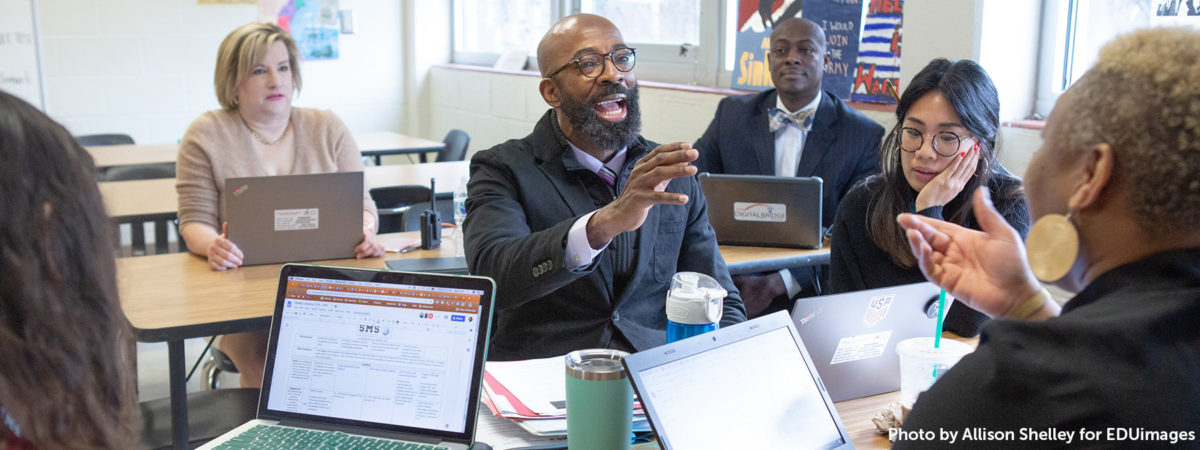
Have you ever found yourself in a leadership position during a time of crisis?
It’s challenging to cultivate a group dynamic conducive to leading through uncertainty. But it is possible, and such a group can be professionally energizing and yield incredible results.
In this article, we’ll explore the four ingredients that allowed us to create a grassroots educational leadership movement in the face of the COVID-19 pandemic.
The acronym VUCA has seen use in corporate lingo recently and stands for volatility, uncertainty, complexity, and ambiguity.
I can’t think of four adjectives that more accurately describe the situation that K-12 educators have faced during the COVID-19 pandemic.
Just three weeks after Michigan’s K-12 schools closed, we formed the Michigan Virtual Learning Continuity Workgroup, made up of 25 classroom teachers, building administrators, and district-level leaders, each known for doing transformational work in their local communities.
When we formed this group, we planned to leverage our collective expertise to create impactful resources for our fellow educators and were successful in doing so.
Beyond simply accomplishing our objective, however, we were surprised to discover how therapeutic this group became for those of us involved. There was a natural synergy among us. We enjoyed one another’s company, and each meeting felt both cathartic and productive. I believe the synergistic culture we cultivated (using the four ‘secret ingredients’ outlined below) only furthered the quality of the work we produced together.
Over the 2020 holiday break, a few members even reported missing the group’s camaraderie and support.
Recently, I’ve been reflecting on the conditions that made this group so successful. In a playful twist on the VUCA acronym, I’ve identified four elements that allowed us to lead together in the face of uncertainty.
No one person has all the answers in a VUCA situation. By being open about our own successes AND failures, we were able to cultivate a culture of humility, listening, and mutual support. We set aside our egos to create a space where everyone could truly be vulnerable with one another.
The high stakes and VUCA nature of the COVID-19 pandemic created a real sense of urgency and shared purpose amongst our group. This urgency kept us united in identifying solutions for our common goals.
In a VUCA situation, it’s easy to fall into the trap of devoting all of your time to short-term fixes. We quickly realized the need to set aside time to imagine a further horizon. By asking big-picture questions, we created resources that addressed immediate needs while still being future-facing.
Most educators didn’t have much time to spare at the beginning of the pandemic. Many of us participated in this group anyway because we felt a moral imperative to give back. This sense of altruism was another ingredient that kept us laser-focused on creating resources that could solve problems for our peers.
These four attributes; vulnerability with one another, unity in shared challenges, commitment to the long-term vision, and altruism toward our field, fostered a group dynamic that was productive and therapeutic in the face of uncertainty.
If you’re seeking to cultivate a leadership community like this one, consider the following questions:
Though the immediacy of the COVID-19 pandemic has passed, VUCA is and will continue to be part of our societal DNA. As educational leaders, we must support one another as we design an educational system that isn’t as readily disrupted by the sudden need for any place, any pace, and any time learning.